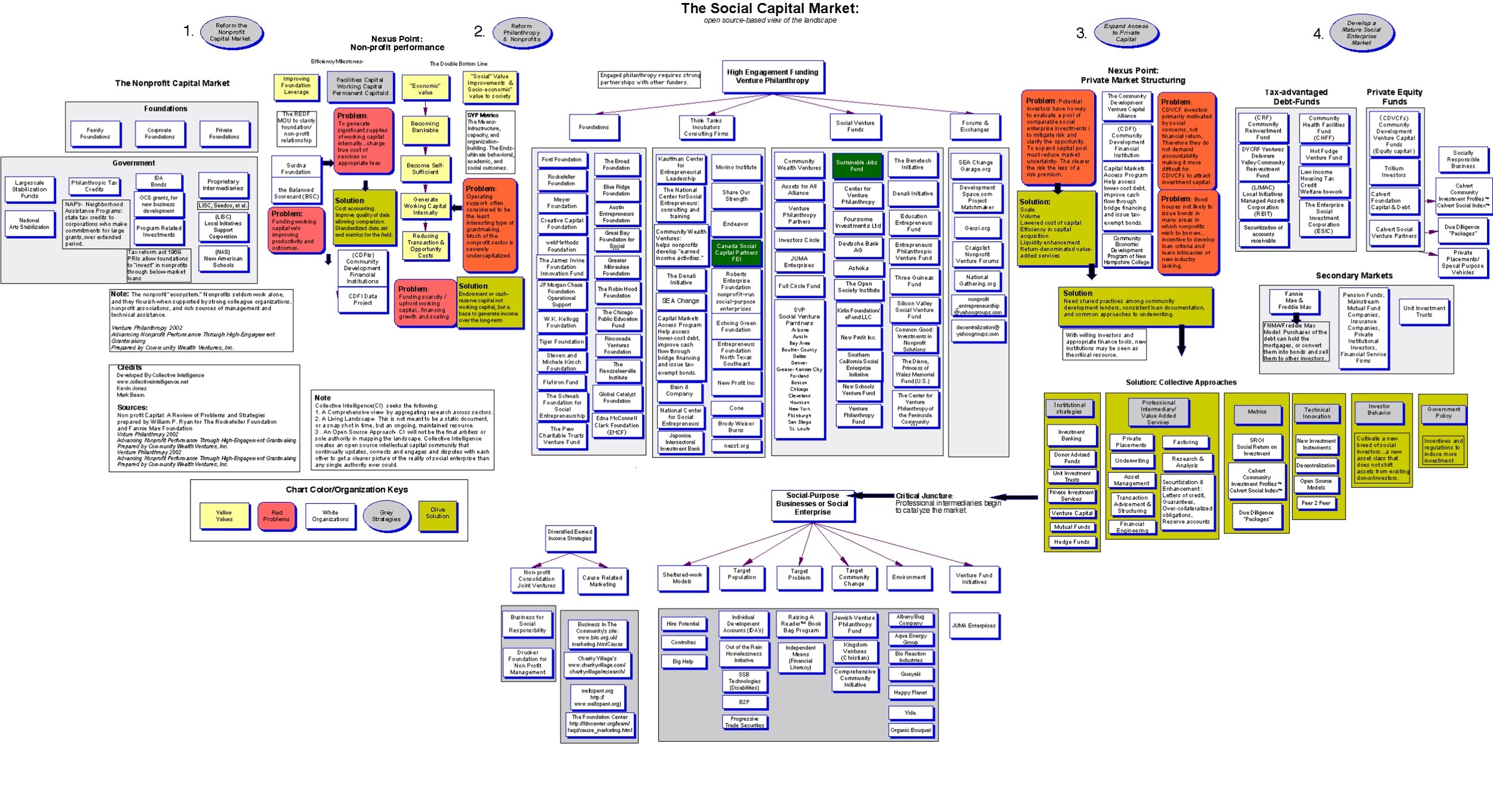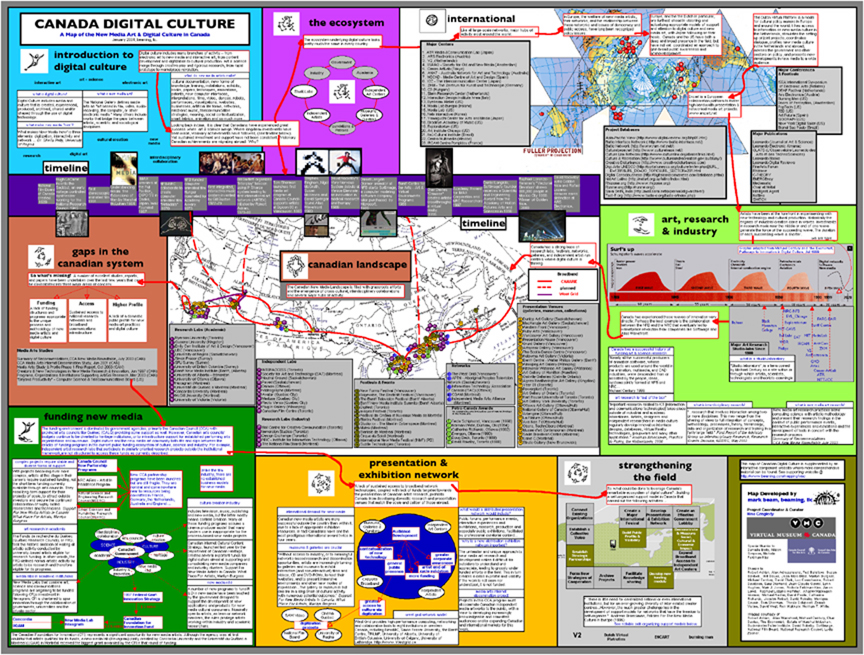“The creative minds who break the mold of what we’ve long considered to be a designer—the architect, the suit-maker, the graphic designer—are poised to shape big businesses the most.”
The first exercise in maximizing impact as an individual or as an ecosystem is to "start with the universe." Everything is connected. We map landscapes with the input of an interdisciplinary group or network of people with direct experience of the ecosystem. This has enabled us to see the first signs of new developments and/or a new set of behaviors. This helps us direct investments and projects in areas with higher potential impact. A sampling of this work follows.
In 2000 I could see that technology was accelerating the emergence of new structures and new ways of doing things. I saw these much like ocean waves that had their own course but altered by parallel waves with their own distinct impact. Sometimes these culminate in almost a coordinated movement with striking effect, but then recede as new waves surface.
We generate wave maps by paying attention to developing patterns from very grass roots sources including surveys, journals, newsletters, markets, books, conferences, AND lots and lots of conversations with people at the base of the ecosystem. (Cab drivers are great proxies by the way). We count on working with a great set of talented friends and collaborators who are positioned to see the formation of new waves of change. Its not predicting the future its being super aware of the present; observations from many perspectives; and its twenty-five years studying waves.
In my early support of the developing ecosystem of social entrepreneurship and impact investing I pushed for a mapping project that allowed to measure how large it was, where the growth was as well as the major gaps. With the support of Spectron, PSM and Halloran and many individual ecosystem players an online map was co-developed leading to this summary map of the gaps and opportunities. To see the online map click on the map.
The large consulting company Gartner Group developed a tool called the Hype Cycle noting a very particular and predictable pattern of development most products, technologies and companies go through. in 2006 I took this tool and adopted it to measuring how a social innovation, social enterprise or vertical market developed calling them Attention Curves. This took my wave maps a step further by measuring their emergence, rise and receding cycles. Click on the map to learn more.
This may be the first map of what we then called "The Social Capital Market" that became Impact Investing. It was the work Kevin Jones and I did that ultimately led us to start Xigi, an online relational mapping tool for this marketplace in 2001-2002, as well as SOCAP. the Social Capital Market Conference and Good Capital. Crude but effective in identifying a very powerful emerging marketplace and the gaps/ opportunities within.
When we started building the Halloran portfolio we had little idea where it would lead us. Its initial investments in microfinance and in SOCAP led to our support of Kiva and then B-Corps. Tony Carr's consistent support of conferences and events very rapidly put us in the middle of great minds and leaders that propelled us faster than slower, bigger investor/philanthropists. Together we began "relationship investing." And it led us here. These kinds of maps are great tools no matter where you are in the investment building process.
Over the past few years I began to see a broader global movement developing accelerated by technology, social media and a youth inspired desire to improve their own communities. The rise of these new mediums created new environments in every field of endeavor bolstered by a change in culture. Innovation means renewal. We are renewing the way the world works. While this is disruptive in the near term, I see it as the beginning of a smarter, more empathetic and healthier future driven by the evolution of a collective intelligence. Click on the map to see a great research paper on this movement.
Commissioned by the Canada Council to map Digital Culture in 20014 we ultimately created not just the map but a timeline, geo-database of the organizations. Seeing the lack of coordination in this diverse and robust ecosystem with a great history, this lead us to develop an online network called Circuit4 to unify the field.
In 2004 we were commissioned by the Canada Council for the Arts to map Digital Culture in the country. This led to the development of a landscape map, but a timeline and geo-database of the organizations in the field. Seeing the need lack of coordination within such an important field, this led us to help develop an online network and platform called Circuit4. Landscape maps like this created from a collective vision become powerful common visions empowering growth and development.









